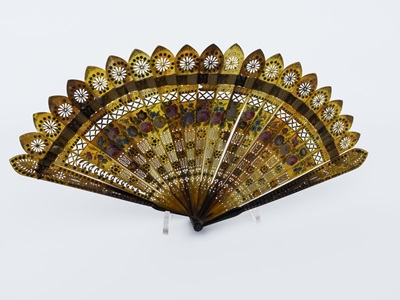This June, LET’S LEARN ABOUT…Tortoiseshell!
The beautiful shells of hawksbill sea turtles have been used for centuries to create jewellery, ornamental souvenirs, and personal items like combs and spectacle frames.

Hawksbill sea turtle
Hawksbills are named for their narrow, pointed beaks, which resemble a hawk’s. They have a unique pattern of overlapping scales on their shells that creates a jagged line along the edges, with light and dark brown patches throughout. The colours and patterns make these shells highly valuable.
Why was tortoiseshell valued in the past?
The use of tortoiseshell to make bowls, dishes, and small personal items dates back to ancient Egypt, thousands of years before you and I were born! It also became popular with wealthy citizens in ancient Greece and Rome, who used it to decorate furniture.
From around 1600, tortoiseshell began to be used again in Europe for inlays (small pieces cut out and inserted into carved patterns) on furniture, decorative boxes, rings, bracelets, fans, combs, and other items.

Folding fan made with tortoiseshell
SAVING THE HAWKSBILL
The popularity of tortoiseshell in the past led to hawksbill turtles being hunted almost to extinction. This led to a near-worldwide ban on harvesting their shells in the 1970s, as well as a ban on the international trade in tortoiseshell products. Today, man-made materials are used to create imitation tortoiseshell objects instead.